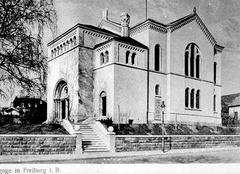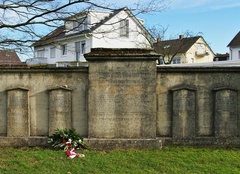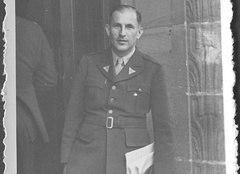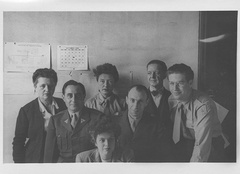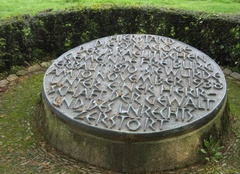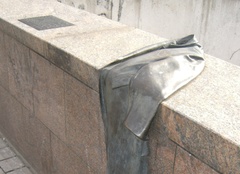Freiburg
Pronounced “FRY-burg” (French: Fribourg-en-Brisgau, Polish: Fryburg Bryzgowijski)
The first Jewish traders likely arrived in the market town of Freiburg shortly after it was founded around 1120. Over the next few centuries, Jews faced high taxes and fees, requirements to wear special clothing and multiple bans from the city. The most extreme case of anti-Jewish violence occurred in the late 1340s when most Jews in the town were burned alive after being blamed for the Black Death. In fact, ritual hand washing and bathing meant that Jewish communities were less likely to spread the disease.
A more permanent Jewish community began to take shape only after the city was annexed to the state of Baden in the early 1800s. The 1862 Law on the Civic Equality of the Jews finally recognized Jews as full citizens and the Jewish population grew from about 20 residents in 1846 to more than 330 in 1871. A Jewish synagogue and cemetery were founded around 1870, followed by a Jewish orphanage in 1874. In 1895, a new Orthodox Jewish congregation formed. In contrast to the main congregation’s Liberal practices (for example conducting parts of the service in German rather than Hebrew), Orthodox followers preferred to maintain traditional customs.
In the late 1800s, most Jewish men in Freiburg worked in banking or industry. A number also graduated from the historic University of Freiburg. Later the first president of Israel, Jewish student Chaim Weizmann received a PhD in organic chemistry in 1899. Weizmann was an early leader of the Zionist movement which arose in the 1890s in response to strengthening antisemitism throughout Germany and Europe. Weizmann and other followers of Zionism fought for the creation of a Jewish state.
By 1910, the Jewish population of Freiburg reached more than 1,300 (still less than two percent of the total population of about 83,300). After World War I (1914-1918), a memorial in the Jewish cemetery was built to honor and recognize 28 German-Jewish soldiers who “died for their Fatherland.” In the 1920s, the Jewish community of Freiburg made significant contributions to the city’s economy. Jewish entrepreneurs owned 10 factories, a department store and a bank. Jewish journalist Käthe Vordtriede reported for the city’s “Volkswacht” newspaper.
However, life for the Jewish community changed for the worse after Hitler was appointed Chancellor of Germany in January 1933. All 21 Jewish professors at the university were dismissed and the number of Jewish students fell from 183 to 54. Nazis confiscated Jewish-owned businesses. On the night of November 9, 1938, the Jewish synagogue was burned to the ground during the pogrom of Kristallnacht. A hundred men were sent to the concentration camp at Dachau.
Many Jewish families attempted to flee the country. By May 1939, fewer than 500 Jews remained in Freiburg. Many received help from the Jewish community organization and a Catholic woman, Gertrud Luckner, who helped Jews escape to the Swiss border.
In October 1940, 350 Jews who were unable to leave Freiburg were deported to the Gurs concentration camp in southwestern France. Two hundred seventy one are known to have perished. Two years later, in August 1942, about 30 of the 41 known Jews who remained in the city were sent via cattle car to the Theresienstadt concentration camp outside Prague. Of a prewar population of more than 1,100, only 11 Jews survived the war in Freiburg.
After the war, some of the Jewish refugees who immigrated to the U.S. returned to Germany to help the Allies prosecute Nazi war criminals. German-Jewish immigrants served as translators and prosecutors at the International Military Tribunal in Nuremberg.
Freiburg: Photographs & Artifacts
-
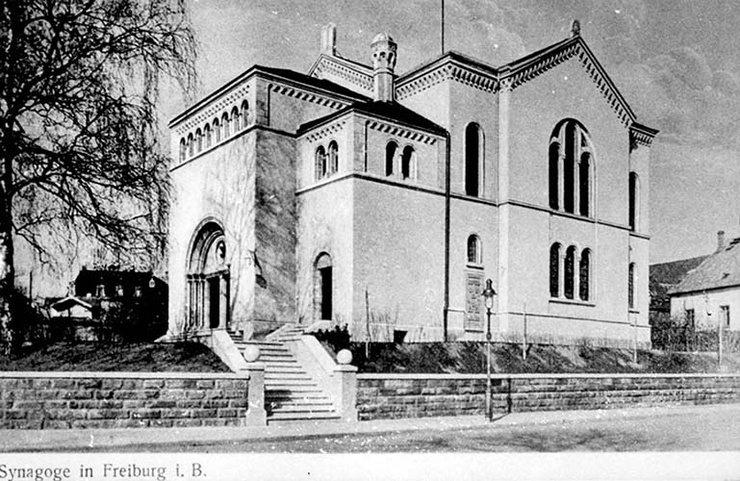 A synagogue in Freiburg, prewar. Credit: Yad Vashem
A synagogue in Freiburg, prewar. Credit: Yad Vashem -
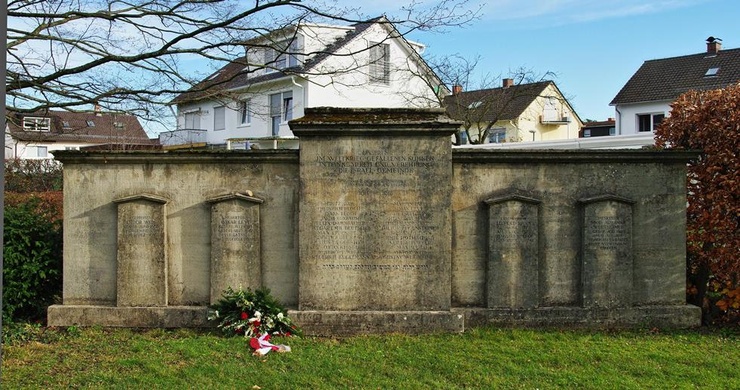 This memorial in the Jewish cemetery of Freiburg honors 28 German-Jewish soldiers who died fighting for Germany in World War I. Photo taken in November 2009. Photo: © Jörgens.Mi/Wikipedia, Licence: CC-BY-SA 3.0, Source: Wikimedia Commons
This memorial in the Jewish cemetery of Freiburg honors 28 German-Jewish soldiers who died fighting for Germany in World War I. Photo taken in November 2009. Photo: © Jörgens.Mi/Wikipedia, Licence: CC-BY-SA 3.0, Source: Wikimedia Commons -
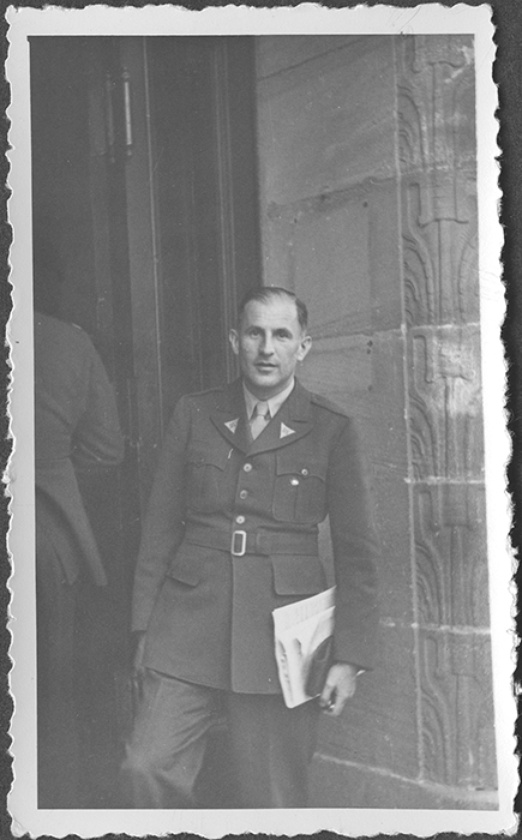 American assistant prosecutor Robert Kempner, at the International Military Tribunal commission hearings investigating indicted Nazi organizations, July 1946. Kempner was born in Freiburg and immigrated to the U.S. in 1935. Credit: United States Holocaust Memorial Museum, courtesy of Gerald (Gerd) Schwab
American assistant prosecutor Robert Kempner, at the International Military Tribunal commission hearings investigating indicted Nazi organizations, July 1946. Kempner was born in Freiburg and immigrated to the U.S. in 1935. Credit: United States Holocaust Memorial Museum, courtesy of Gerald (Gerd) Schwab -
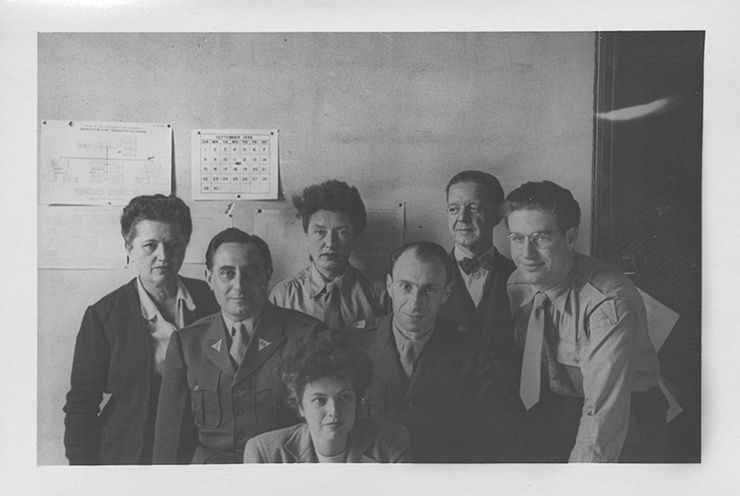 Group portrait of interpreters at the International Military Tribunal at Nuremberg, 1 October 1946. Gerd Schwab (at the right). Gerd (now Gerald) Abraham Schwab was born February 19, 1925 in Freiburg. Credit: United States Holocaust Memorial Museum, courtesy of Gerald (Gerd) Schwab
Group portrait of interpreters at the International Military Tribunal at Nuremberg, 1 October 1946. Gerd Schwab (at the right). Gerd (now Gerald) Abraham Schwab was born February 19, 1925 in Freiburg. Credit: United States Holocaust Memorial Museum, courtesy of Gerald (Gerd) Schwab -
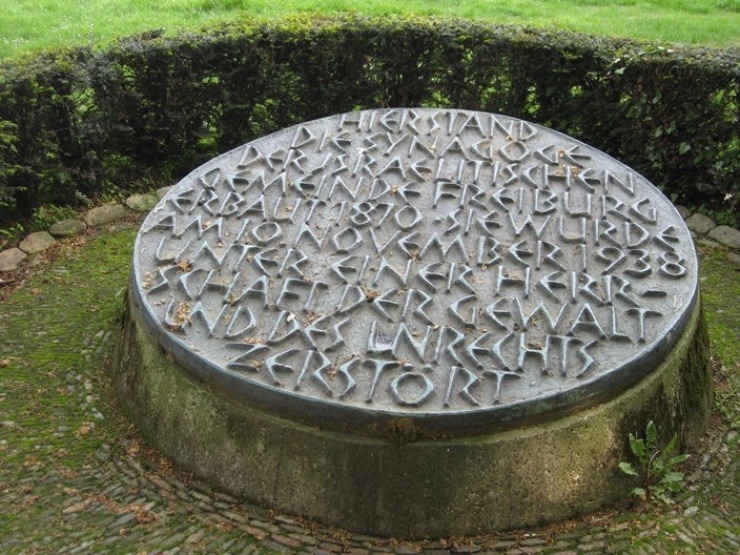 "Here stood the synagogue of the Jewish community in Freiburg, built in 1870. On November 10, 1938 it was destroyed under a regime of violence and injustice." Credit: Wikimedia Commons / Public Domain
"Here stood the synagogue of the Jewish community in Freiburg, built in 1870. On November 10, 1938 it was destroyed under a regime of violence and injustice." Credit: Wikimedia Commons / Public Domain -
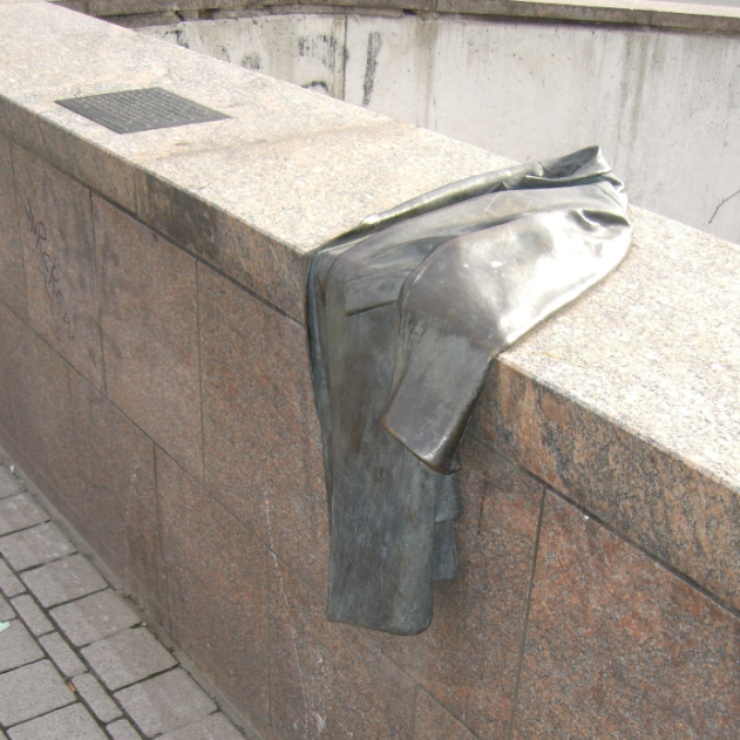 A memorial to the 350 Jews deported to the Gurs concentration camp in October 1940. A Star of David can be seen on the jacket. Photo from October 2009. Credit: Dr. med. Mabuse / Wikimedia Commons / CC-BY-SA-3.0
A memorial to the 350 Jews deported to the Gurs concentration camp in October 1940. A Star of David can be seen on the jacket. Photo from October 2009. Credit: Dr. med. Mabuse / Wikimedia Commons / CC-BY-SA-3.0 -
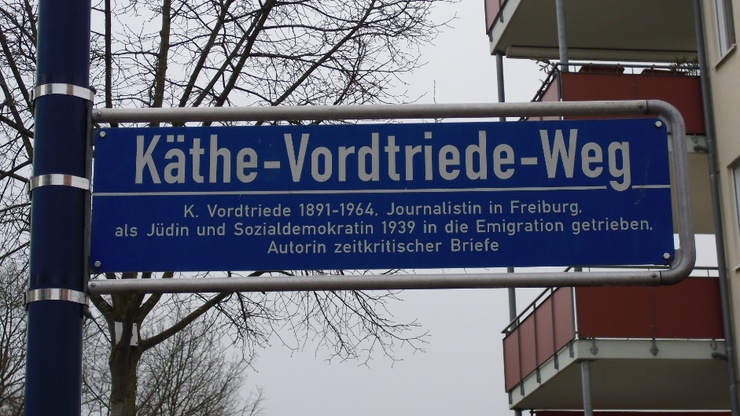 This street was named for Käthe Vordtriede, a German-Jewish journalist in Freiburg. Credit: Wikimedia Commons / Juergenlang63 / CC-BY-SA 3.0
This street was named for Käthe Vordtriede, a German-Jewish journalist in Freiburg. Credit: Wikimedia Commons / Juergenlang63 / CC-BY-SA 3.0
